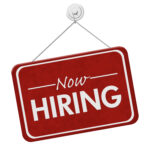At a recent seminar on the use of alternative risk transfers (ART) in hard markets, “ART Solutions in a Time of Capacity Shortage,” global reinsurer Swiss Re, which hosted the event, noted that more and more of its clients are seeking new avenues to address risks not easily covered by standard or traditional markets.
Martin Albers, head of risk solutions at Swiss Re’s financial services business and member of the company’s executive board, remarked on the peculiar environment—recession looming, war and terrorist threats, and corporate malfeasance—and its unique effects on current insurance markets during his opening statements. “In this environment, where the economic outlook is uncertain, the political outlook is uncertain, we also have a perception crisis in particular, in my opinion, driven by corporate scandals,” Albers said. “They have eroded the trust of the public, also of the investors. In many instances, the management is seen as acting in their own interest, not necessarily in the company’s interests … Credibility, in my view, is a rare but very hard currency in today’s environment. The best way for a company today to show performance is basically on hard fact … In this environment, I think, capital has become quite rare and scarce. Investors, in my opinion, are becoming a combination of shy and risk-averse.”
Albers explained how risk and other forms of capital are available only at a high cost. “I think we see that at the press equity evaluations, we see it in high spreads for corporate bonds, and we see it in a hard insurance market. These are all reflections of a high premium being demanded by investors.”
He continued, “Obviously, the capital base has been significantly depleted. It’s a combination of three effects. It’s the wearing through of years of a soft market. It’s an exceptional loss burden in 2001. It’s a cumulative effect of a poorly performing equity market for approximately three years. This depletion exceeds by far the new capital that has entered the industry. Therefore, on a net basis, there has been a reduction of capital—a reduction of capacity available.
“So there are basically two drivers that clearly shape insurance dynamics right now,” he said. “Risk capital comes at a premium because the whole financial market started the risk premium, and capacity is truly short.”
Albers mentioned that besides soft market effects and poorly performing equity markets, capitalization cycles have a major influence upon insurance markets. “A third effect comes into play for the insurance world—basically, that is the cycle. The insurance industry … must diversify the risks simultaneously every day through the portfolio, but also over time. And there is a catch-up after a soft cycle where capital has to be replenished. So apart from the fact that capital as such is right now very scarce and expensive, there is also a recovery period right now. And that drives the rating of the insurance prices because underwriting profit is the way to recover the capital base and replenish the capital base of insurance companies. … This means that rates will go further up, differentiated by line of business, obviously, and by the actual performance. And (rates) have to remain high for the industry to recapitalize.”
According to Albers, ART solutions can help offset lack of capital by using existing capital in novel ways. “The application of ART solutions can become very interesting, because ART solutions use capital in a very efficient way. They try to replace certain gaps in coverage.”
He cautioned, however, that the fundamental drivers can not be avoided through the use of ART solutions. “The fundamental drivers are the risk transfer and the risk content … the risk transfer will not escape the hard market. I think it’s very clear in today’s environment, thinking back about the issue of credibility and transparency, that the economic purpose of the transaction has to be crystal clear, very simple, for everybody to understand. … And the third point is, the transparency and disclosures to all stakeholders is paramount. These are some of the fundamental properties that we have to observe when you think about ART solutions in today’s environment.”
ART options available
Fernando Gentil, head of structured finance at Swiss Re’s financial services business group, elaborated on client needs in the current market, and how ART solutions can address them. He noted that as retentions are increasing and limits are decreasing, client needs pertain largely to reinsurance capacity to cover traditional risks that standard carriers are unwilling to cover, or risks for which limits have decreased so far that coverage is no longer adequate. Also, many clients now face new risk classes, especially after Sept. 11, excluded from traditional reinsurance coverages.
“Our clients are also looking for earnings stability and predictability,” Gentil said. “Basically, they come to us and say, ‘We’d like to reduce the volatility from what we call exogenous events or factors.’ As you all know, it’s very tough to explain to the outside world, to the analysts, to the rating agencies, to the shareholders, why certain surprises have hit businesses in areas that were really not core to that business.”
Addressing the issue of capital management, Gentil said, “When I talk about capital management, I’m talking about insurance as a form of capital—in this way, one of our solutions addresses our clients’ needs to have a certain level of liquidity at a reasonable cost in times that are difficult. This allows our client to maintain its capital strengths and its ratings quality.
“Let’s not forget investors as clients,” he continued. “Obviously, since (Swiss Re’s) acquisition of Fox-Pitt, Kelton in 1998 and the formation of our financial products business group, we consider investors to be as important a client as corporates and insurance companies. What are investors looking for these days? They’re looking for new alternative asset classes. They want to diversify their fixed income portfolios.”
Gentil explained how insurance companies can provide themselves with their own ART solutions, independent of reinsurers: “One of the measures that some of our clients do take in this type of market is, they set up their own insurance companies called captives—they’ll form pools amongst corporations in a certain industry. So these are ways in which our corporates address these issues.”
Gentil noted that finite reinsurance, contingent capital, insurance-linked securities and asset-backed securities are areas in which solutions to client needs can be found. For instance, he said finite reinsurance, insurance-linked securities and asset-backed securities could be used to provide greater insurance capacity, and that the need of earnings stability and predictability can be met through finite reinsurance, contingent capital solutions, and weather derivatives.
Reconciling a hard market
Gary Ransom, managing director of the company’s Fox-Pitt, Kelton unit, described some of the background of the current underwriting cycle, as well as how new capital is shaping the market.
“Prices were going down for roughly 12 to 13 years,” he said. “It made us forget what a hard market even looked like … Now prices are in fact rising, and starting to rise in the 20 to 25 percent range.
“The prices are just one part of the equation,” Ransom continued. “The losses are another …” He then pointed out some differences between the last hard market and the current one: “Inflation was driving losses up dramatically, prices were going down. From there, things did improve with all those rate increases. But we had all these catastrophes, we had these charges—it wasn’t so clear that the improvement was that great, unless you look at it this way. The (underlying profits) were fairly substantial in the early 1990’s and improved all the way to 1997. It was really in 1997 when those rate decreases started to cut into the bone. Losses started to rise, and the capacity started to dissipate.”
Ransom outlined how new capital raised after Sept. 11 is being used to address client needs affected by hard markets. “We added up a lot of equity offerings, a lot of secondary offerings of companies since 9/11. Because as capital was eliminated, it changed the marketplace dramatically … It scared companies away from writing business.”
Ransom continued, “About $26 billion has been raised in the insurance industry since 9/11. We also tried to segregate out just the part that’s available for the property/casualty business … The net new capital was $18 or $19 billion. That is actually a lot less than they lost in the World Trade Center. So this new capital in the equity world made a bit of headlines—people were worried that they were going to react in a way that would start to drive prices down and the hard market would be over. Well, that didn’t happen.
“This new capital was put there for a very specific purpose—to earn a good return. (Companies) want to participate in lines of business where no one else wanted to write it. They wanted to make the market work again.”
Topics Trends Reinsurance Market
Was this article valuable?
Here are more articles you may enjoy.


 Insurers Get Green Light to Pay Less Than Billed Charges in Florida PIP Cases
Insurers Get Green Light to Pay Less Than Billed Charges in Florida PIP Cases  Growing Progressive Set to Hire 10,000+ in Claims, IT, Other Roles
Growing Progressive Set to Hire 10,000+ in Claims, IT, Other Roles  Jury Awards $80M to 3 Former Zurich NA Employees for Wrongful Termination
Jury Awards $80M to 3 Former Zurich NA Employees for Wrongful Termination  London Firms Are Letting More Staff Work Entirely From Home
London Firms Are Letting More Staff Work Entirely From Home 


